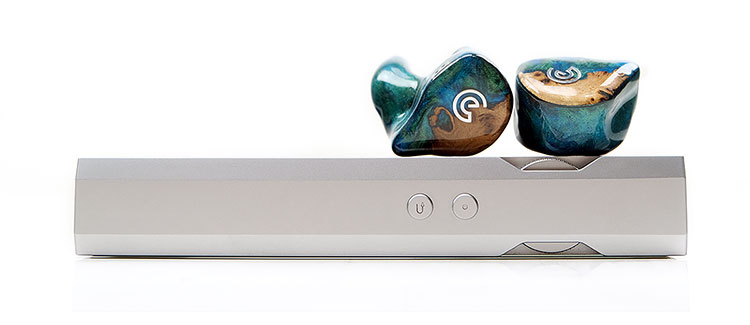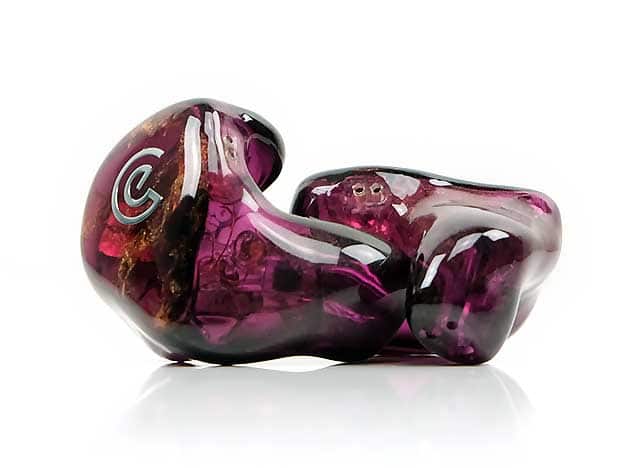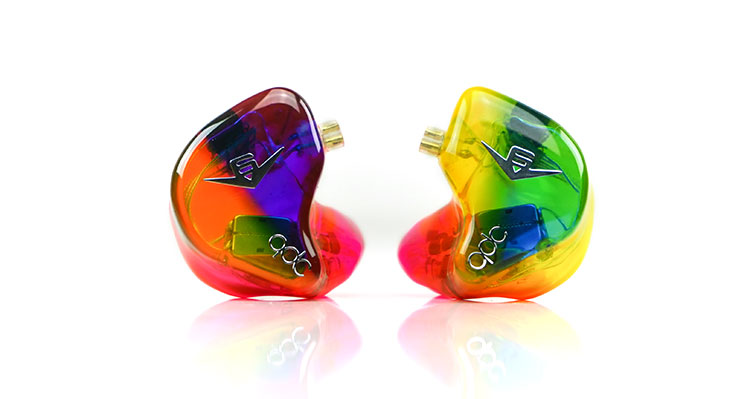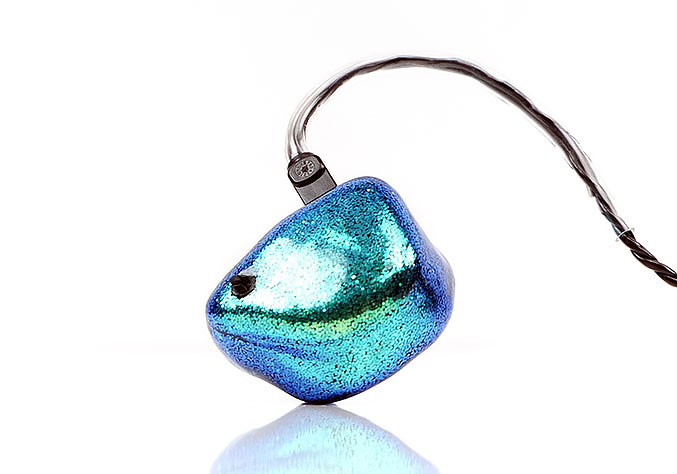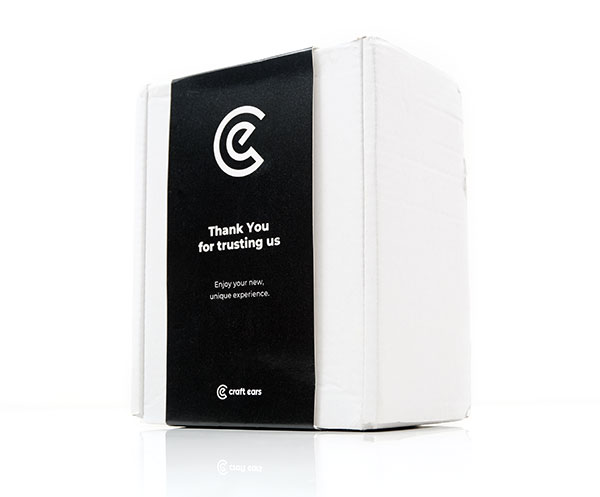Sound Impressions
Summary
The Craft 6 is a more mature and balanced offering than the Craft 4 but in some ways, it is also a more authoritative-sounding monitor as well as being more complete and mature in its presentation.
The overall tuning has a substantial sub-bass response up to 50Hz with some good separation and a lack of bass bleed. It achieves that by lessening the mid-bass punch and presence and instead it goes for a more neutral transition into the lower-mids.
From 200Hz up to 1k you get only a minor rise in an otherwise linear response curve. It thins out the lower-register instrumental notes a shade but in turn, you get a solid denser bass fundamental compared to the likes of the Aether R and even the Craft 4 which are a little lighter in that department.
From 1-3k you get a considered bump for instrumental and vocal presence but it is not as forward as the Aether R or as ‘spicey’ as the Anole V6. This is more of a natural lilt to vocal presence to push them slightly forward but not unnaturally so.
There is a dip from 4-6k which takes a little bite and energy out of percussion and rounds the timbre a little more than some of the competition, (see more detail below). The Craft 6 opts instead for a gentle 6-8k mid-treble push that is in line with the mids 3k peak so it sounds balanced without being pushy or creating any harmonic dissonance.
The emphasis or focus here is producing as natural a tone as possible for percussion which can sometimes be a hard thing to get just right without sounding too bright or rolled-off.
Timbre
The Craft 6 has a nice degree of transparency and timbral balance that plays nicely with various source signatures. If the source is brighter you are going to hear a bit more treble shine through and vice versa with warmer sources.
The underlying timbre errs to the natural and slightly rounded side underpinned by a satisfying level of density and power from the sub-bass response.
That density and sustained amplitude up to 50Hz delivers some satisfying gravitas for a BA low-end and in turn creates a relatively tight fundamental in lower pitching instruments such as kick drums, bass guitar plucks, and bass synth attacks.
The perception of physicality is really good with the Craft 6 and not just in the lower register either. Simple percussion strikes from woodblocks and rim shots have a very clear attack and firm sustain but just enough natural decay to sound very natural at the same time.
That 4-6k in the FR seems to be acting as a counter to the 6-8k rise keeping that familiar BA peakiness from seeping down into the mids timbre and adding unnecessary sibilance to vocals and percussion timbre.
That is also one of the reasons why I refer to the slight roundness in the Craft 6’s vocal timbre also. There is definite treble energy but it is more subtle than forceful and overall, I find the harmonic balance through the mids and treble to be just right.
Staging
The Craft 6 has surprisingly good depth and excellent imaging through the mids. Height is fairly balanced and does not lack headroom or feels artificially attenuated. It is not an overly airy staging quality with more sub-bass, vocal, and mid-treble emphasis combined with excellent separation.
On the low-end, the sub-bass is slight to the fore with less mid-bass and upper bass presence which is my favored tuning if you are going for a bit of rumble. The flatter upper bass to lower-mids tuning means lower-pitching instruments, (500Hz marker) are not that forward in the mix compared to the 1-3k vocal presence.
That means the fundamental and most mixed-voice and some breathy falsetto vocal mixes will be the fore on the Craft 6 stretching the stage in a pleasing holographic manner. BA articulation and speed do help a lot here in terms of clear and relatively precise imaging.
Mid-treble is more to the fore than upper treble on the Craft 6 so it’s not an ethereal sounding experience which I am just fine with. The main focus is on that 2-3k marker and up to 50Hz on the low-end with a light sprinkling of some mid-treble energy for clarity and extension.
Synergy
Efficiency
The Craft 6 ratings are not as complete as I would like but that is not unusual in this business. The 7Ω impedance rating should not be a factor for source output values with the flat impedance True Load technology.
To be honest, not too many DAPs in the last 2 years have offered anything higher than >1Ω to 2Ω balanced for that to be an ongoing concern.
Suffice to say, the Craft 6 is fairly easy to drive, and whilst there is no official SPL we felt that it was somewhere around the 105dB SPL marker.
Compared to the Lime Ears Aether R and the qdc Anole V6, the Craft 6 needed a little more current but not by much, perhaps 2-3dB at most in low gain from DAP SE outputs, (iBasso DX300 and the FiiO M15).
Background hiss or reproduction thereof from known source high-noise floors is well controlled on the Craft 6 using the stock SE cable. Both the test DAPs offer no hiss, as well as additional DAPs that were tested purely for hiss including the HiBy R8, and Luxury & Precision’s P6.
Even a notoriously high noise floor such as Hifiman’s R2R2000 was impressively quiet on both SE and balanced using Effect Audio’s Virtuoso 2.5mm TRRS aftermarket cable.
Pairings
For my own personal preference, I tended to drift more to neutral Delta-Sigma offerings that delivered a very good level of dynamic range and pushed the low-end and treble a bit further forward.
DAPs such as FiiO’s M15 and the multi-bit Hifiman R2R2000 sounded stunning with the Craft 6 with excellent treble and vocal presence. Both injected a little more bite also in the upper-mids giving the signature a more exciting sound compared to laid back warmer DAPs.
The R2R2000 was probably the most impactful for the sub-bass response but credit to the M15, more and more I am impressed by its low-end separation and the Craft 6 is a good example of that synergy.
Both the iBasso DX300 and HiBy R8 extended deep also with the DX300 the widest in terms of staging capability with the Craft 6.
However, I found myself pushing the volume up more and more with these two as they tended to sound fairly relaxed. I also did a little PMEQ on the upper mids with the DX300 just to add a bit more bite.
The R8 is weighty on the low-end, perhaps weightier than the DX300, but it fades a little towards a thinnish treble response from the Craft 6. I would opt for the DX300 if you want a more balanced non-fatiguing presentation with the Craft 6 out of those two.
For R2R, no competition, they sounded the absolute best with the Craft 6 mixing richness with incredible detail and dynamic range. The P6 resistor-based version was top-dog here for just sheer enjoyment with a fine blend of natural warmth and spot-on imaging separation.
Select Comparisons
Craft Ears Craft 4
€550
Technical
The Craft 4 was reviewed by us last year and walked away with the Bang For Buck Custom IEM Award for 2020, though you can also buy it in a universal format.
Inside, this is a quad BA driver configuration using a dual (sub)woofer, a single mid driver, and a single super-tweeter driver for the highs. It uses a four-way, complex crossover with a three-way acoustical bore design.
The driver type is all Sonion and the whole ensemble is rated at a fairly easy to drive 10Ω though not quite as easy as the 7Ω 6 BA driver Craft 6 on paper.
As far as I can tell, the Craft 4 does not officially use the new tech found inside the Craft 6. That includes the RASEN Bass, SES, and True Load technology though I am informed the design used a very early version of SES with a stepped internal chamber and not the refined 3D printed horn design now found in Craft 6.
Without an SPL rating for either, this comes down to a simple comparison. Using an SE output from the DX300 and FiiO’s M15 in low gain neither had any problems with background noise or hiss but it does seem that the Craft 6 is a little less sensitive than the Craft 4 in terms of volume matching.
Design
The Craft 6 and Craft 4 designs we have here are entirely interchangeable meaning you can pick either design for either monitor and it will not affect the final price. Nice and simple.
The form factors do vary though with the Craft 6 a considerably larger or deeper design compared to the lighter and smaller Craft 4. That’s understandable given the additional drivers inside the Craft 6 and the acoustical space and tubing required for them.
With no bass venting ports required both monitors have rock solid isolation and both have comfortable fits. Of course, how accurate that fit is down to the molds you supply but since I use the same digital graphs for all my customs these have been fairly consistent.
The cable is an upgrade over the Craft 4 with 8-wire SPC as opposed to the simpler 4-wire on the Craft 4. I honestly do not find myself reaching for an upgrade cable unless to satisfy my curiosity whereas with the Craft 4 it felts a little veiled using stock.
Performance
Done correctly a good 6 driver should always outperform a good 4 driver and that’s the case here with the Craft 6 over the Craft 4. The immediate impression is a better harmonic balance with more top-end information, a cleaner timber, and simply more space to breathe.
Low-end
However, the case for 6 over 4 is not simply down to numbers, there have been some clever tuning changes to stretch the staging quality in all dimensions as well as retain that ‘drummer legacy’ with what I hear as a better bass performance over the Craft 4.
For one thing, the sub-bass actually has a bit more elevation up to 50Hz in the Craft 6 which really serves up a better perception of depth and a stronger bass fundamental compared to the Craft 4. The Craft 4 has some nice weight but its mid-bass bloom is stronger so it’s not as tight or as defined sounding.
Mids Separation
The second ‘trick’ is the bass to mids separation which is stronger on the Craft 6 with next to no mid-bass rise and a fairly neutral mid-bass response curve up to 800Hz-1k.
That pushes back the lower-mids, leaving the bass dominance right at the very low-end, and providing the midrange with as much space as possible to sound clean and clear.
It also keeps warmth a bit lower than on the Craft 4. Notes are less rounded, more fleet of foot, and more accurate for timbre. Both have a very similar response curve through 1-4k but because of the bass and treble changes, it sounds quite different in terms of coloration.
Treble Boost
The mids on the Craft 6 also have a bit more space to breathe and that’s primarily due to the very different treble tuning compared to the Craft 4.
The Craft 4 tuning has a substantial dip from 4-7k that takes a bit of air and energy out of the lower-treble response. That gives it is rounded tone and lower-order harmonic dominance.
The Craft 6 actually bumps from 5-7k so it has a bit more perceived energy and articulation by comparisons. The staging will seem taller, the spatial cues and imaging more dynamic and importantly both timbre and separation are cleaner and stronger through the mids.
qdc Anole V6
$1320
Technical
We reviewed the Anole V6 back in early 2019 and for me a very strong performer for a price point not too far from the Craft 6. You can get this in both universal and custom format much like the Craft 6 also.
Both monitors are 6 driver configurations with the Anole v6 using 4 small and 2 larger balanced armature drivers, (presuming 2 for the lows, 2 for the mids, and 2 for the highs).
It would seem the Anole V6 internal arrangement has all the drivers quite close to the nozzle with a triple-bore tube exit into a horn design exit.
The Craft 6 is a bit more complex in its arrangement with a dual sub for the lows, a dual for the low-mids, a single BA for the mid-highs, and one super-tweeter using a 5-way electrical crossover.
The tweeter is encased in that SES horn design in the nozzle but does not use a single wide bore design like the Anole V6. Instead, it uses a tri-bore exit on the tip.
Both have variations on their technical pitches with the qdc tuning switchboard on the rear of the Anole V6 shell offering 4 different types of sound signatures.
The Craft 6 instead offers a flat impedance performance with its True Load technology. One is going for tuning choice, the other is going for absolute accuracy in terms of synergy.
Efficiency
Because the tuning of the Anole V6 is variable so also the impedance at 16-29Ω versus the 7Ω fixed rating of the Craft 6. The Anole V6 is rated at 106-109dB SPL whereas we do not have an official rating for the Craft 6.
Our side-by-side testing suggests that the Craft 6 might have a lower SPL via a single-ended output compared to the V6 though not a huge gap. Neither are terribly hard to drive and neither are that hiss sensitive either, especially in SE mode with our two test DAPs, the DX300 and M15.
Design
I did have to pick a wild and fruity design for the Anole V6 didn’t I. I still stand by its bold color scheme which qdc calls the Magic Color Edition. It has some beautiful pop and stands out a mile from most anything else I have reviewed before.
The Ocean Blue of the Craft 6 is much more subtle and organic in tone with that blend of blues, greens, and tanned wood. You could say it is more complex but I am fairly sure it’s a more suited design for less brave souls than the Magic Color on the Anole V6.
The form factor is slightly different with the Anole V6 quite a bit wider but slightly flatter or not as deep as the Craft 6. The qdc shell has much more of a ‘swish’ in hits cornering which exaggerates its overall size.
Both monitors are all BA with no bass venting so the isolation levels are excellent. I would, however, give a tiny edge to the Craft 6 in terms of absolute isolation versus our big office aircon despite both rated at -26dB. Just a little more aggressive which I quite like and that may be down to tiny fitting differences.
The big drawback for qdc in the design is that reversed polarity protruding 0.78mm 2-pin connector system. The supplied 1.2m 4-core silvering copper wire cable wrapped in a translucent PVC jacket is just ok, nothing special. However, the reversed polarity makes it more difficult to roll with regular aftermarket cables.
The Craft 6 is a regular 2-pin so easier to roll for aftermarket cables and offers a superior 8-core SPC cable as stock compared to the 4-core inside the Anole V6 package.
Performance
Comparing these two is a shade trickier give the Anole V6 has the ability to change sound signatures four different ways with the rear switchboard.
Default
In the default setting the Anole V6 is close to the Craft 6 with a similar emphasis on the low-end, an elevated low-end, and a studied application of treble without overdoing it. Both veer to the listening than the analytical side.
However, there are some nuance differences. On the sub-bass level, the Craft 6 has a slight edge in terms of quantity and depth with more presence up to 50Hz and slightly less mid-bass punch. The Anole V6 carries a tiny bit more warmth and presence from the mid-bass into the upper bass and lower-mids but not a huge amount.
Both have forward mids but on the Anole V6, the FR is slightly different again with more presence from 2-3k and no dip from 4-5k which the Craft 6 has. That subtly changes the timbre, giving it a slightly sweeter lighter tone made more so with slightly more treble energy from 6-8.
Again, we are talking subtlety here rather than outright differences. Side by side, the Craft 6 just has a more rounded smoother tone, denser, and slightly less percussion bite. On the Anole V6, you might get a bit more splash and natural vocal sibilance occurring compared to the more liquid vocal timbre of the Craft 6.
Strong Bass
With the strong bass switch, the Anole V6 closes the gap a little on sub-bass presence but it’s more the mid-to-upper bass warmth that dominates so you get a bit more power but also a bit more bloom.
Lower-mids instrumental and vocal does get comparatively warmer also but mids clarity takes a little dip compared to the default setting.
Here the Craft 6 still has the better sub-bass definition and impact and sounds a little tighter also with less bass bloom though not as warm. Beyond 1k, the performance remains similar to the default settings in terms of differences.
Sweet Vocal
Compared to the standard mode the lower-mids start elevating from 500Hz rather than 1K and the strong bass sub-bass bias drops back to a shade lower than the standard mode. Mids and vocal presence come more to the fore with a bit more percussion bite.
The Craft 6 sounds far weightier compared to this mode but has a little less upper mids energy and bite. The sound is again denser, more rounded, and smoother with a more neutral vocal position and slightly less bite on the percussion.
High Sensitivity
This is a little more v-shaped for me with more of a contrast in the timbre compared to the Craft 6. The focus here is more on the upper-mids whereas the Craft 6 is a bit more relaxed in the same region.
The Anole V6 gets some of its low-end power from the standard-setting back but for me, this is the brightest setting with the cleanest timbre whereas the Craft 6 sounds smoother, more controlled, and a bit more liquid overall.
Lime Ears Aether R
€1200
Technical
Our final comparison is the highly regarded Aether R from Lime Ears which we reviewed in mid-2019. Like the Craft 6, this is also an all BA custom monitor with a similar 6 driver count.
The Aether R uses a hybrid crossover meaning that sub/low is split via an acoustical crossover (namely TrueSub) and the split between lows/mids/highs is achieved via an electrical crossover. Thus, the configuration is a ‘double’ subwoofer, ‘double low’, single mid, and a single high.
The Craft 6 opts for a dual sub for the lows, but instead of a ‘bass split’, it goes with a dual for the low-mids, a single BA for the mid-highs, and one super-tweeter using a 5-way electrical crossover.
Both companies have their proprietary tech with the Aether R offering a switchable bass signature, variable bore sizing for resonance control and 3D printed filters for their TrueSub low-end tech. The Craft 6 also has some 3D printing for RASEN bass acoustical control, as well as an SES horn nozzle for the tweeter and a flat impedance implementation with True Load.
The Aether R has no official rating but we guessed it to be around 111dB to 112dB SPL based on our crude matching tests with known rated IEMs in the reviews. The Craft 6 does have a declared impedance rating of 7Ω but no SPL rating either.
In our side-by-side tests using a single-ended output from the DX300 and M15, it does seem the Craft 6 is a bit less efficient than the Aether R so our rough guess is around the 105-108dB SPL marker.
Design
With both being pure balanced armature designs, no bass venting is quired, and both isolate to an excellent level. I would say, however, the Aether R nozzle is just a shade thicker with more pressure exerted on my ear canal compared to the Craft 6.
That means the Craft 6 is the more comfortable but with more pressure, the Aether R might just have the better low-Hz isolation but it is a very fine margin. Sometimes with higher pressure, the sound you get is the pressure on the ear canal itself rather than external noise.
The two companies offer a very wide range of designs but the two here are quite different. The Aether R Scarabeus design is quite unique to me with its special processed opalizing glitter all-over finish that flashes different colors under different lighting conditions.
The Craft 6 opts instead for a blend of varied but stable colors with its Ocean Blue Design. It’s a little less flashy but might not intimidate as much as the Scarabeus design.
Both use 0.78mm 2-pin connectors but here the 8-core SPC Craft 6 stock cable is much better than the flimsier 4-core OFC Plastics One type unbalanced build wire that comes with the Aether R. You will be wanting to change the Aether R cable a lot faster than the Craft 6 version with its stiffer resistance and poor dynamic range performance.
Performance
The Aether R has two settings, ‘bass on’ and ‘bass off’, with a reduction of around 4dB up to 50Hz and a smaller 1-2dB drop from there up to 200Hz for off.
The ‘bass on’ setting of the Aether R is closer to the Craft 6 compared to keeping it off. With it on you get a better low-end hit and more warmth into the lower-mids compared to the neutral and flatter sounding ‘bass off setting’.
There are some differences that make them fairly easy to distinguish. The Craft 6 has more of a bump from 20-50Hz with the Aether R rolling off a little more in this area. The Aether R opts for more mid-bass lift with a peak around 100Hz and enhanced presence into the lower-mids.
The Craft 6 drops the mid-bass punch and opts for a neutral response curve much earlier from 200Hz with a very small rise up to 1K. You can hear that difference by the amount of warmth in the Aether R and a closer staging quality to lower-pitching instruments. There is less of a bass fundamental so it is not as dense sounding.
Both have midrange lifts for vocals but the Aether R has more amplitude around the 2-3k region. In fact, this is the high point of the Aether R tuning whereas the Craft 6 is slightly more neutral. The timbre on the Aether R is a little more euphonic but imaging for vocals is more intimate also.
Both have 4-5k dips into the treble, however, the Craft 6 has more lower-treble presence around 6-7k whereas the Aether R opts for upper treble energy. You get a slight muting of upper-mids percussion bite on the Aether R’s more subdued lower treble but more top-end sparkle for the absolute high-end.
My Verdict
Though I have yet to hear the universal version, I do encourage you to take a listen to the Craft 6 if you are after versatile and high-performing BA configured monitors. The sound is nuanced in part, strong and surprising where I least expected it to be but overall a very enjoyable listening experience.
What I like most is the harmonic balance the Craft 6 offers when compared to competing 6 driver monitors. I think Craft Ears has been very clever with the FR response in ensuring the BA drivers are not overly pushed and peaky to deliver that natural and very balanced sounding tone.
The synergy is also excellent with the majority of the sources I paired it with offering a degree of transparency important to me when referencing.
Granted this costs a lot more than the Craft 4 but the improvements are palatable and the design or craftsmanship is excellent. I still think given today’s market the price here is very reasonable given the excellent performance.
Craft Ears Craft 6 Specifications
- Frequency response 2Hz-23kHz
- Impedance 7Ω (± 0.8Ω)
- Noise Isolation -26 dB
- 5-way electrical Crossover
- RASEN Bass, True Load, and SES





